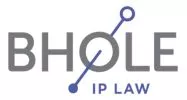As we find ourselves in the early days of 2025, the United States Patent and Trademark Office's (USPTO) new fee structure, implemented on January 19, 2025, is now in full effect. In order to maximize value and cost-efficiency, patent applicants should adapt their patent prosecution strategies given this new fee landscape. The USPTO's recent adjustments represent an average increase of 7.5% across current fees, with the introduction of 52 new fees. These changes should be navigated carefully in order to optimize patent strategies.
One of the most impactful changes is the introduction of fees for continuing applications based on the time elapsed since the earliest benefit date. Importantly, there will be no fee for continuations filed within six years of the earliest benefit date. This new tiered system encourages applicants to file continuations earlier in the patent lifecycle. To adapt, applicants should reassess their continuation strategies. It may be beneficial to file continuations earlier in the prosecution process, potentially front-loading some of the work that might have been deferred in the past. By doing so, applicants can avoid additional fees while still maintaining the flexibility that continuation practice offers. For lower-priority continuations, carefully weigh the cost-benefit of filing later against the potential for technological advancements or market changes that might necessitate broader claims. Regular portfolio audits can help identify potential continuation opportunities early, allowing for more strategic decision-making within the six-year window.
The USPTO has also made significant changes to the Request for Continued Examination (RCE) fee structure. The fee for the first RCE request will increase by 10%, while second and subsequent RCE requests will see a more substantial 48% increase. This change, coupled with the sunsetting of the After Final Consideration Pilot (AFCP) program, suggests that the USPTO is encouraging applicants to reach resolution earlier in the examination process. To adapt to these changes, applicants should consider more aggressive prosecution strategies in the initial examination and first RCE. This might include conducting more thorough prior art searches before filing, drafting claims with a clearer focus on patentable subject matter, and engaging in more substantive interviews with examiners to resolve issues before reaching the RCE stage. Additionally, analyzing examiner statistics and tendencies can help tailor a prosecution strategy, as some examiners may be more receptive to interviews or certain types of arguments; which could reduce the need for RCEs.
Another significant change is the introduction of graduated fees for Information Disclosure Statements (IDS) containing more than 50 references. This new fee structure is designed to account for the increased examiner review time required for large IDSs. To mitigate these potential additional costs, applicants should adopt a more strategic approach to IDS submissions. This could involve conducting a more thorough review of references before submission, potentially culling less relevant art, and considering the timing of IDS submissions more carefully. When possible, it may be beneficial to submit IDSs in smaller batches throughout the prosecution process to avoid fees associated with large submissions.
Given the increased costs of prosecution, utilizing Patent Prosecution Highway (PPH) programs becomes more attractive. The PPH is a system of cooperation between patent offices that allows applicants to request accelerated examination of their patent application in the USPTO if the claims have been deemed patentable by another participating office, potentially leading to faster and more efficient patent prosecution. Consider prioritizing filings in offices with faster examination processes to leverage PPH benefits in the USPTO. Additionally, investing more resources in responding to office actions in the other examined applications can increase the likelihood of allowance and unlock the benefits of the PPH.
In light of these changes, applicants should adopt a proactive and strategic approach to patent prosecution, including conducting more comprehensive pre-filing analyses. This might include more thorough prior art searches, careful consideration of claim scope and strategy, and a detailed assessment of the potential commercial value of the invention. By investing more time and resources at the outset, applicants may be able to streamline the prosecution process, potentially reducing the need for continuations, RCEs, and extensive IDS submissions.
The 2025 USPTO fee changes present both challenges and opportunities for patent applicants. By adopting more strategic approaches to patent prosecution, including more thorough pre-filing analyses, increased use of examiner interviews, flexible claim drafting, improved prior art management, and careful consideration of filing timing, applicants can navigate these changes effectively. These strategies have the potential to lead to more efficient and cost-effective patent prosecution in the long run. Accordingly, applicants should review their current practices and consider how they can adapt to optimize their patent strategies in this new landscape. By adopting these strategies, applicants can not only mitigate the impact of increased fees but also provide an impetus to strengthen their patent portfolio.
The content of this article is intended to provide a general guide to the subject matter. Specialist advice should be sought about your specific circumstances.


